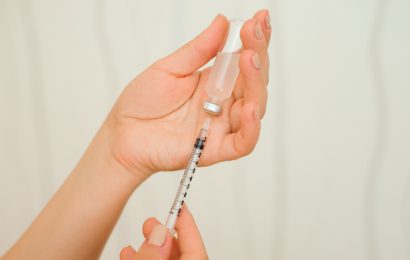Strategies to reduce after-meal blood glucose spikes are among the most sought-after pieces of information on our Web site, as evidenced by the popularity of articles such as “Strike the Spike” and “Strike the Spike II.” Now, new research shows that short bouts of moderately intense walking can lower blood glucose levels after eating and improve 24-hour glucose control.
To compare the effectiveness of three 15-minute bouts of walking after meals to one 45-minute bout of walking for controlling blood glucose, researchers recruited inactive people age 60 or older who were at risk of impaired glucose tolerance based on their fasting blood glucose levels. Participants were given a basic screening, and over the next four weeks, underwent three study protocols in random order.
Each protocol consisted of a 24-hour control period, in which participants were asked to remain inactive in an experiment room, followed by a 24-hour period in which they walked on a treadmill at a moderate pace (an average of 3 miles per hour) for either 15 minutes after each meal, 45 minutes in the morning, or 45 minutes in the afternoon. On all of the study days, the participants gave a fasting glucose sample and glucose samples 30 minutes before and 30 minutes after meals, and they were hooked up to a continuous glucose monitor.
The researchers found that average glucose levels over 24 hours were significantly reduced by both the 15-minute postmeal walks and the 45-minute morning or afternoon walks. Glucose levels three hours after lunch were also lowered by all types of walks. Walking for 15 minutes after each meal, however, was significantly more effective at lowering glucose levels three hours after dinner.
According to Paul Thompson, MD, who was not involved in the research, “Exercise sensitizes you to insulin, so it helps with insulin disposal, but exercise also has an insulin-independent mechanism for glucose disposal… Physicians should not forget to recommend exercise for their patients with diabetes or prediabetes.”
Limitations of the study include its small size and its relatively healthy, self-selected group of participants.
For more information, read the article “Seniors Can Walk Off After-Meal Glucose Spikes” or see the study’s abstract in the journal Diabetes Care. And to learn more about reducing blood glucose spikes after meals, read the article “Strike the Spike II” by certified diabetes educator Gary Scheiner.




